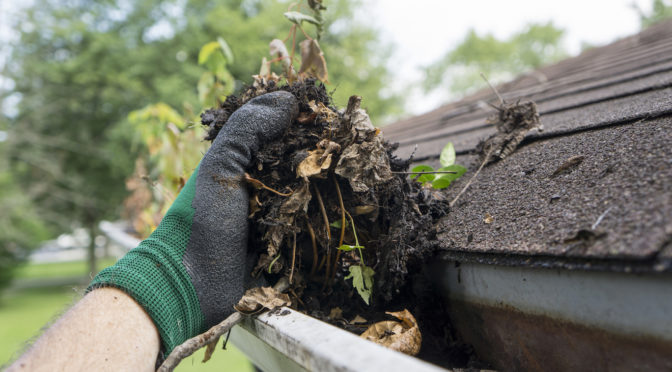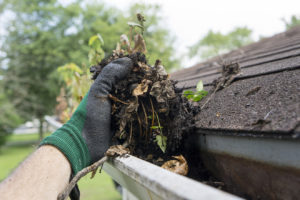Manufactured Home Safety Has Come A Long Way
 The manufactured homes of today are much sturdier than they were in the past. Before HUD standards and regulations were established in 1976, the mobile homes of yesteryear had a reputation for not being as safe and secure as traditional site-built homes. Between high construction standards and modern technologies this has all changed, and now manufactured homes are safer than they’ve ever been. In fact, manufactured homes are built with 20 to 30 percent more materials than site-built homes in order to withstand transport and extreme weather, making them strong and resilient structures.1 The intentional “sight-line” design and professional management of modern manufactured home communities make this lifestyle even more safe and secure.
The manufactured homes of today are much sturdier than they were in the past. Before HUD standards and regulations were established in 1976, the mobile homes of yesteryear had a reputation for not being as safe and secure as traditional site-built homes. Between high construction standards and modern technologies this has all changed, and now manufactured homes are safer than they’ve ever been. In fact, manufactured homes are built with 20 to 30 percent more materials than site-built homes in order to withstand transport and extreme weather, making them strong and resilient structures.1 The intentional “sight-line” design and professional management of modern manufactured home communities make this lifestyle even more safe and secure.
Today’s manufactured homes are safe and nearly as secure as site-built homes, but there are still plenty of additional security precautions you can take to keep your family, home and valuables safe.
Some of the best ways to add security to your manufactured home include:
Check Windows for Warping
Windows and frames can become warped from heat or water exposure, weakening them and making them easier to compromise. Be sure to frequently check all the windows and doors in your home, making sure they fit into their frames snugly. It’s also important to check the frames themselves to confirm that there are no gaps or breaks in the construction. Any weakness in doors or windows could make it easier to break into the home, so if you find any damage you’ll want to get it fixed immediately.
Use Dowels in Sliding Doors & Windows
Putting wooden dowel rods, “jammers”, or blocks of any materials in all sliding doors and windows from the inside is always a good idea. This will keep anyone outside from being able to slide doors or windows open, even if the locks fail or aren’t engaged. The dowel or jammer you use should be almost as long as the door or window – just short enough that it will fit on the inside but not allow any movement of the door or window.
Check Exterior Doors for Stability
If your manufactured home currently has a hollow exterior door, you may want to consider upgrading to a quality, solid exterior door. Hollow doors can be easier to break, but a solid wood or even aluminum door is a good investment since it will prevent anything or anyone from getting through the door itself. It’s also a good idea to occasionally check and make sure the door pins are upright and securely fit in place. Loose or uneven pins could make your entryway more vulnerable. Between a solid door and a sturdy pin, you should have no security issues with your exterior door.
Add Extra Locks
Deadbolt locks are a great idea to install on every exterior doorway to your home, even if you’re already taking the precautions listed above. Many pre-owned manufactured homes will already have these installed but if your home only has knob locks it is worth taking the extra time and money to add them. Think of this as a worthy investment that will give you peace of mind, and maybe even save you more money, for years to come. Additional specialized window locks can also be added, usually from the inside, if you wish to further secure the windows.
Invest in A Locking Safe
A combination or locking safe not only keeps your precious valuables safe in the event of a break-in, it can also deter criminal activity in the first place since thieves know they are unlikely to find anything valuable laying around outside of it. It’s a good idea to put any items of value in the safe when you leave the house, especially if you will be gone for more than a few hours or going on vacation. A small safe can be enough for valuables like jewelry, money and laptops, but if you have larger, more expensive possessions, you may want a larger safe that can fit more items. Home and office safes are available in many different sizes, with options for either combination and electronic keypad locking mechanisms.
Use Light Timers Inside to Appear Home
Light timers can help you program lamps inside the home to come on at a certain time of day – or at selected intervals- to give the appearance that someone is home even if you are out. Experts say having lights on in the evening or early morning can help deter criminal activity since criminals usually are looking to avoid being seen or caught in a confrontation. Setting timers on a TV can be helpful for the same reason, and many TVs already have this functionality already built in.
The best strategy for light timers is to set them so they mimic human activity. Maybe it goes on in the kitchen in the morning, off again for part of the day, turns on in the living room for a few hours in the evening, and then in a bedroom or office later on. It might seem a bit ridiculous to set so many different timers in different rooms, but some experts say that leaving lights on or setting timers too predictably or obviously can actually help burglars figure out you’re not home. So, be thoughtful about where you are and how you usually act in your evenings at home and set your timers to mirror that.
Install Motion Lights Outside
One of the best ways to discourage any criminals from coming near your home is to install motion sensor lights on the outside of the home. When any movement comes within range of the light it turns on, illuminating the area and scaring off the intruder. Whether the trespasser is a raccoon or a criminal, you’ll be able to see and report any foul play if you’re home. If not, motion lights can still easily trick wrongdoers into thinking someone is home and has flicked on the light. Another extra precaution to help keep your possessions and loved ones safe.
Install Home Alarms or an Alarm System
Full-blown alarm systems like ADT are great, but there are other more user-friendly and tech savvy options available nowadays like Ring, Nest and SimpliSafe. These options often give you control to monitor your home security from your smartphone and usually save records to the cloud.
Even low tech home alarms, like Doberman window sensors, can be affordable, effective and easy to install. Set up alarms on each door or window so that, when activated, a loud siren will sound if the window or door is tampered with. The alarm will startle the intruder(s) and typically scare them away, but you’ll also be made immediately aware that there could be a safety risk in the house. If you hear one of the alarms sound you should call 9-1-1 right away, even if the attackers appear to have fled.
Even just purchasing and displaying the security system sign can encourage criminals to pass by and target another home with less protection. Homes that don’t have any sign of security systems are about 3 times more likely to be broken into than those without, so it’s helpful to make it look like you have an alarm system even if you don’t.
Install a Video Surveillance Camera
If you’re really serious about home security and want to have documentation of any criminal activity, a video surveillance camera can provide the ultimate peace of mind. Some of these systems record video at all hours, while others have advanced features like motion sensors or recording timers. Cameras can help deter criminal activity to begin with since any lawbreakers will want to avoid being caught on tape. But, if any offenses or disputes occur, you will be more likely to help authorities catch the criminals or settle the issues thanks to the evidence captured on camera.
**Safety and Security Pro Tip: Consider a Community
Living in an organized manufactured home community is one of the best ways to ensure the safety and security of your home, family, and possessions. The close-knit nature of these communities also often creates a group of trusted friends and guardians, making illegal activity easier to detect and harder to get away with. Some communities may even have an organized Neighborhood Watch program or security patrol that can help monitor criminal activity and protect the community.
Manufactured home communities are also designed with ‘sight lines’ in mind, so neighbors have a direct view of the nearby homes. The physical layout of the neighborhood actually helps dramatically reduce the likelihood of crime on these properties. Communities with professional management can strictly enforce rules and even evict problematic neighbors that violate rules or threaten community safety.
Make Your Manufactured Home Safe and Secure
Nothing is more important than feeling safe and secure in your home, knowing that your family and possession are safe as well. When buying a manufactured home it’s important to make sure the home is already set up for safety, with quality windows, doors, and construction as they should be according to HUD code standards. Then, consider the extra security measures we’ve recommended above to make your manufactured home as safe as possible and keep your peace of mind.
Sources:
- 6 Busted Myths About Manufactured Housing
- Should You Leave Your Lights On At Night?
- How to Secure Your Mobile Home



